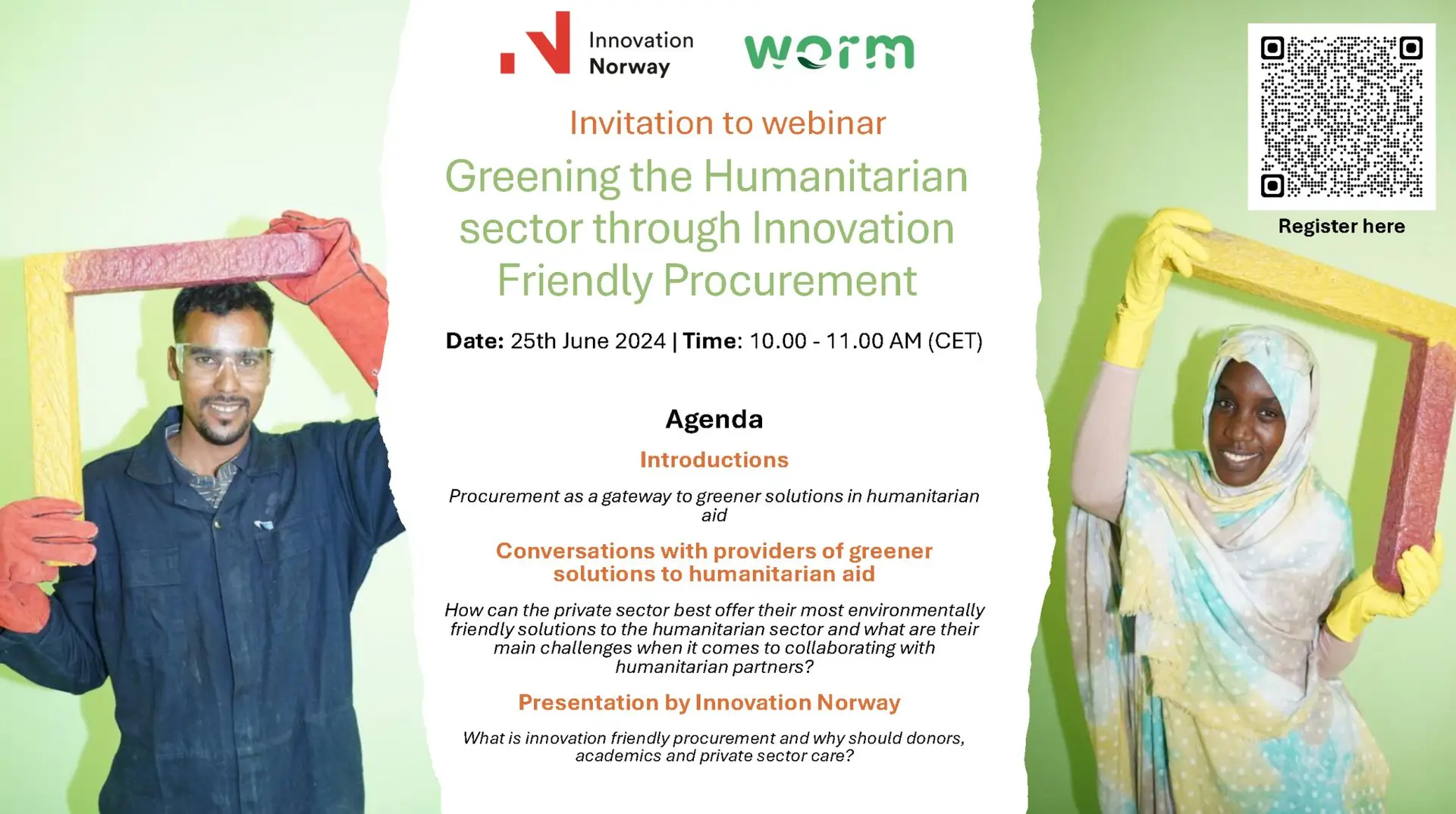Procurement as the Gateway to Greening Humanitarian Aid (Keynote)
This article reflects the keynotes as provided by Claire Barnhoorn during the “Greening the Humanitarian Sector through Innovation Friendly Procurement” workshop hosted by the Humanitarian Innovation Program of Innovation Norge on Tuesday 25th of June 2024, as part of the WORM consortium (a Horizon Europe funded project). I was requested to express my vision on the importance of procurement as the gateway to green humanitarian aid. For those who have been following me, or know me, a topic close to my heart and mission we support with our work with Solvoz (follow my speaking events here or reach out for questions).
I am grateful to Innovation Norway for the invitation to speak and the work package in this Horizon Europe project to focus on the opportunities to green the humanitarian sector, starting from procurement.

The Financial Landscape and Procurement's Significance
Today, if we start from a helicopter, we face a seismic shift in the financial landscape of humanitarian aid. Humanitarian budgets have surged from $1.9 billion in 2000 to an astounding $56 billion in 2023 (source: Financial Tracking system UNOCHA 2023 – https://fts.unocha.org/home/2023/plans [accessed 25th June 2024] ). This growth brings a moral responsibility to ensure these funds are spent efficiently and effectively. Our supply chains are critical in our humanitarian operations and amount on average to around 75% of the total response cost of humanitarian operations (Stumpf, Besiou, & Wakolbinger, 2023), a figure that underscores the strategic importance of supply chains and procurement in our sector.
Procurement, however, is often viewed as a support function but should rather be seen as a strategic and critical component of humanitarian operations. Reflecting on Mary Anderson’s “do no harm” principle (Anderson, 1999), we should extend this ethos to our funding allocation. The Do No Harm principle of Anderson is an attempt by humanitarian aid and development cooperation to monitor the intended and unintended impact of their activities to avoid contributing to instability and violence. While the principle focuses on their contributions to instability and violence, we should look again at this principle towards our unintended consequences regarding our environmental and sustainability efforts. We should start from what we buy, or procure, in the first place. It’s all about what we are asking for.
Procurement and the Sustainable Development Goals (SDGs)
The role of procurement is vital in achieving the Sustainable Development Goals (SDGs). For instance, SDG 5—promoting gender equality—can be advanced by empowering women-owned businesses through our procurement practices. Moreover, SDG 13, addressing climate action, or SDG 17 sustainable development, resonates deeply with the greening of humanitarian responses.
By integrating sustainability criteria into our procurement processes, such as the repairability and recyclability to the technical specifications of a product, we can minimize our waste generation, contribute to a more circular supply chain and significantly reduce our environmental impact.
Untapped Potential and a Holistic Approach
The humanitarian sector, unlike the private sector carries a mission beyond profit, it’s about maximizing impact. Procurement stands as a crucial gateway to realizing this mission. Various dimensions holistically contribute to sustainable procurement. First of all, it’s at the policy and strategic level (to be driven from the management level and in discussions with our donors), secondly, it’s about product specifications (as the example of adding repairability into your technical specifications, about the toxicity of components, durability etc), and finally, it’s about assessing our suppliers (to include in our supplier verification and validation).
The biggest misconception probably around sustainable procurement, is that it’s the task of procurement colleagues and departments. As the holistic approach above indicates, it is a collaborative effort, that should be driven by the management team, and embedded in our broader strategies. It’s about setting the sustainability targets in our policies, about technical criteria (material, design etc) of our products and supplier assessments.
By embracing sustainable procurement practices, we can unlock the potential of procurement to create an immediate, longer-term impact. Let’s use our procurement power as a leaver for change, to contribute to our SDGs, to green our sector.
Copyright © 2017-2024 Claire Barnhoorn, Some Rights Reserved
